In this issue: Parent Portal, best practices, tips, and a freebie!
|
|
|
|
ISSUE 8 | MAR. 2020
|
As many—if not all—schools implement alternative, remote-teaching approaches, we are here to help. Download our tips for supporting remote learning with the Parent Portal for reminders and how-to essentials.
|
|
|
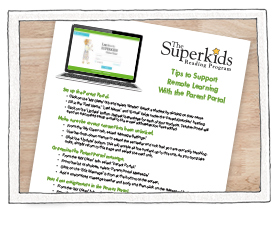 
|
As another support, we have recently enabled additional content in the Parent Portal, including Student Book pages with audio activities, Backpack Pages, Resource Pages, and Practice Pages. Using the Parent Portal > Post Class Assignment page in the Teacher Portal, you can assign these extra resources for students to access from home.
If your school is new to Superkids online materials or you are looking for ways to modify Superkids instruction for at-home learning, please watch the recording of our March 26 webinar.
The Zaner-Bloser team is temporarily working from home to help contain the spread of COVID-19, but otherwise operating “business as usual.” If you need guidance on what you can distribute to students and parents, please e-mail with questions.
We planned to review best practices that help you get the most out of The Superkids Reading Program in this issue of the newsletter. We’re still going to do that in the hopes that you will be able to refer to some now and others later when circumstances are better.
Stay healthy and safe. Let us know how we can help.
|
|
|
|
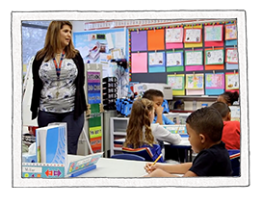  |
|
Why is this important? Daily Routines provide real-time assessment of children’s progress, which allows you to reinforce or reteach as needed.
The routines are important to do every day because they help children develop critical skills and provide you with a quick assessment of skills just taught. This practice is essential to learning and contributes to long-term memory retention.
|
|
Why is each routine important?
| • |
Phonemic Awareness
Along with letter naming ability, phonemic awareness is the strongest predictor of beginning reading success. Phonemic awareness plus letter-sound knowledge unlocks the key to the alphabetic principle.
|
| • |
Blending
Blending is unnatural and must be taught and practiced; it is the bridge between knowing letter-sounds and being able to decode words.
|
| • |
Decoding
Daily decoding practice helps children create mental orthographic images in their brain, developing fluency and accuracy.
|
| • |
Encoding
Encoding is the reciprocal process of decoding. It strengthens the development of the neural pathway that connects letters (orthographic processor) with sounds (phonologic processor).
|
| • |
Spelling
Children need to practice spelling their Memory Words each day to solidify them in their mental lexicon.
|
| • |
Handwriting
Correct letter formation and automaticity in handwriting facilitates spelling and writing. Fluency in letter formation is critical to free up the brain energy for composition.
|
|
|
|
 Jamie Abel uses music and the handwriting Daily Routine as a transition activity. As students return from an out-of-class activity, she has the routine displayed and a fun, popular song playing. Children quickly settle and begin their handwriting because they can’t sing along until their work is complete and checked for accuracy. It’s a great way to provide a smooth transition, manage time, and have fun!
Jamie Abel uses music and the handwriting Daily Routine as a transition activity. As students return from an out-of-class activity, she has the routine displayed and a fun, popular song playing. Children quickly settle and begin their handwriting because they can’t sing along until their work is complete and checked for accuracy. It’s a great way to provide a smooth transition, manage time, and have fun!
|
|
| |
Why is this important? Because “practice makes permanent.” Without feedback, children’s mistakes can become permanent bad habits. Children’s work should be monitored to ensure they are working with accuracy. Checking their work also shows students that their work is important. Independent activities should provide practice with skills that have been taught during core instruction.
|
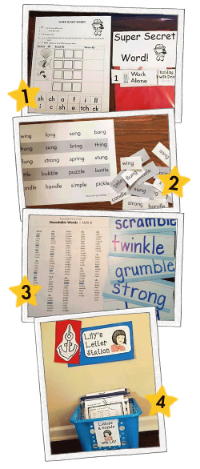 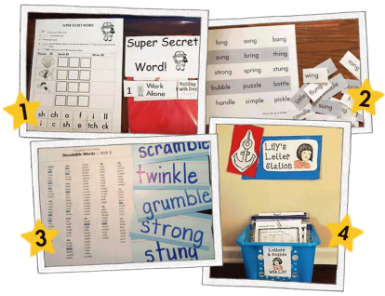 |
|
Tip #1
Provide students with options to check and correct their own work. This teacher places an example of a correctly completed task inside a file folder. When students are finished, they simply lift the flap to see how they did.
Tip #2
This teacher prints out Big Book of Decoding pages, laminates them, and cuts them to create word cards for games and sorting activities. This makes it easy to keep activities current with instruction.
Tip #3
In the Materials section of the Teacher Portal, you can find decodable word lists that align to instruction. Use these unit word lists to easily create decoding and encoding practice activities.
Tip #4
Set up some SUPER fun stations for independent work time. Building with Doc includes word-building activities. Handwriting with Hot Rod includes materials to complete the daily routine. Lily’s Letter Station has fun activities to reinforce letter-sound correspondence. Box It & Bag It with Tic, Tac & Toc includes games stored in boxes and baggies for partner or group play. Ettabetta and the Big Book reinforces blending and decoding by returning to the Big Book. Comprehension with Cass has activities that students can do after reading independently.
|
|
Superkids provides many avenues for informing you of children’s needs. Observing students during Daily Routines, daily skill work, and small-group reading provides information about how children are progressing with new skills. These informal assessments can be combined with the program’s formal assessments and school- or district-provided assessments.
|
|
|
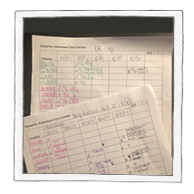 
|
|
|
 It can be challenging to observe every student every day during Daily Routines, so here’s a tip from the teacher whose data catcher is pictured. She divides her class into four small groups to view each day and records her observations for just those students in the selected group. By the end of the week, she has information about each child and plans her differentiation activities for the next week accordingly.
It can be challenging to observe every student every day during Daily Routines, so here’s a tip from the teacher whose data catcher is pictured. She divides her class into four small groups to view each day and records her observations for just those students in the selected group. By the end of the week, she has information about each child and plans her differentiation activities for the next week accordingly.
|
|
|
|
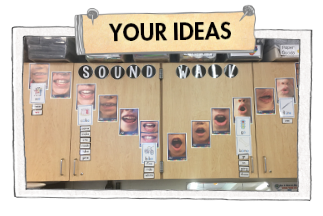

|
|
Brittany Rae is using a sound wall in her classroom. As opposed to traditional word walls that organize words by beginning letter, sound walls organize letter-sounds by the way they sound in spoken language. She has even incorporated Superkids Sound-Spelling Cards.
|
|
|
Sound walls can be a helpful reference for students as they write and encode independently and a powerful tool for teaching.
You can learn more about sound walls in this video from PaTTAN.
|
|

Add some extra excitement to the rewards you give students with the loveable Superkids characters. With nine coupon options, there’s something here for all occasions and classrooms—even a create-your-own coupon.
|
|
|

|
|

|
|
|
|
|